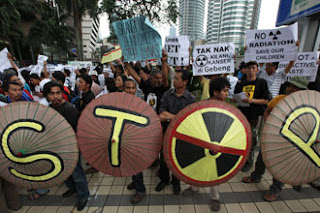BEIJING — The Three Gorges Dam, the world’s largest hydroelectricproject and a symbol of China’s confidence in risky technological solutions, is troubled by urgent pollution and geologic problems, a high-level government body acknowledged Thursday.
Related
The statement came as technicians were certifying the very last of the dam’s array of generators as suitable for hydroelectric generation, the final step in a contentious 19-year effort to complete the project in defiance of domestic and international concerns over its safety as well as threats to the environment, displaced people, historical areas and natural beauty.
According to official figures, the venture cost China about $23 billion, but outside experts estimate it may have cost double that amount. The dam has been plagued by reports of floating archipelagoes of garbage, carpets of algae and landslides on the banks along the vast expanse of still water since the 600-foot-tall dam on the Yangtze River was completed in 2006. Critics also have complained that the government has fallen far short of its goals in helping to resettle the 1.4 million people displaced by the rising waters behind the dam.
China’s State Council, a coordinating body often likened to the United States president’s cabinet, said in a vague statement that the project suffered from a wide range of serious problems. “Although the Three Gorges project provides huge comprehensive benefits, urgent problems must be resolved regarding the smooth relocation of residents, ecological protection and geological disaster prevention,” the statement said.
The huge dam is meeting the government’s goal of producing pollution-free electric power, the government said, generating 84 billion kilowatt-hours of electricity last year. But critics say the sheer weight of water backed up in the 410-mile-long reservoir behind the dam has increased the danger of earthquakes and landslides. The government has acknowledged that risk, but denied that the project played any role in China’s powerful May 2008 quake in Sichuan Province, in which at least 87,000 people died.
Environmentalists say the lake has become a repository for the waste dumped by cities and industries.
Even the dam’s ability to regulate the notoriously changeable flow of the 3,900-mile-long Yangtze, one of China’s two major rivers, has been called into question. Faced with a historic drought this spring, cities downstream of the dam have been unable to accommodate oceangoing vessels that usually visit their ports, and about 400,000 residents of Hubei Province lost access to drinking water this month.
Although no link has been proved, critics say the dam has changed regional water tables, contributing to the shortage.
The government statement on the dam was released after a meeting led by Prime Minister Wen Jiabao, seen by many outsiders as more responsive to average citizens’ complaints than many others in the nation’s leadership. The statement said that some problems were anticipated during the dam’s construction, but that others “arose because of new demands posed by economic and social development.”
China’s rulers may be most concerned by the impact of the dam on the displaced masses, many of whom appear to have failed to rebuild their lives after being evicted from the land covered by the reservoir. By 2020, the statement promised, displaced residents would enjoy living standards equal to those who had not been displaced.
The Three Gorges project has been dogged by skeptics, even within China’s bureaucracy, since it was approved in 1992. Environmentalists said it would destroy a stunning landscape of limestone cliffs regarded as one of the world’s most scenic sites, and skeptics warned that the new lake would lead to geologic and pollution problems.
Orville Schell, an environmental expert who leads the Asia Society’s Center on United States-China Relations, said he hoped that the government’s statement signaled a commitment to address the dam’s problems.
“There’s a kind of a balance sheet of benefits and liabilities that have come out of this project,” Mr. Schell said. “My sense is that the Chinese government is getting better and better at collecting information about things like this.” He added, “They know if they don’t fix these problems there will be dire consequences.”




